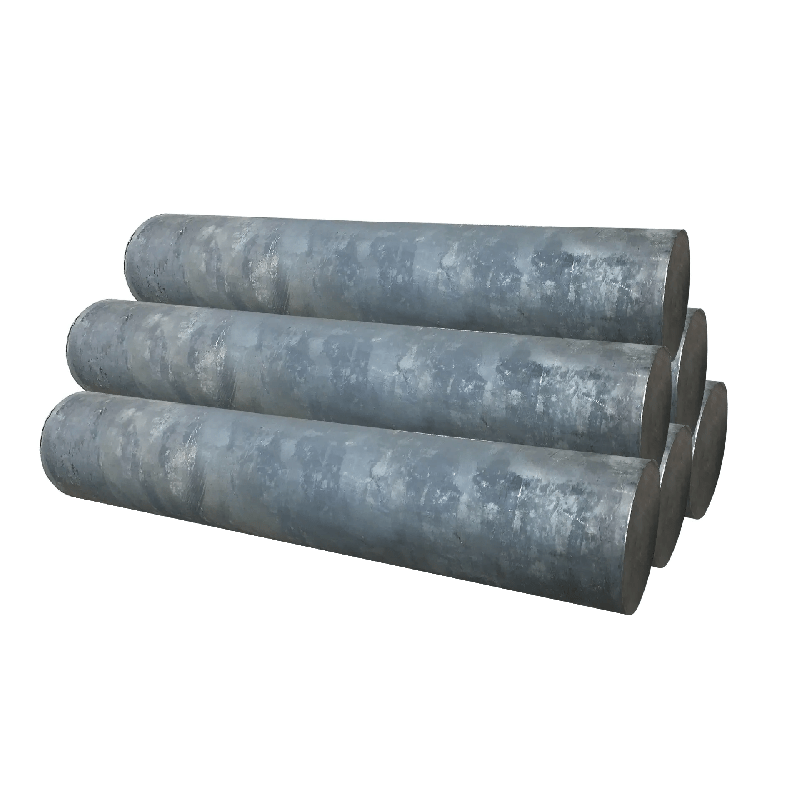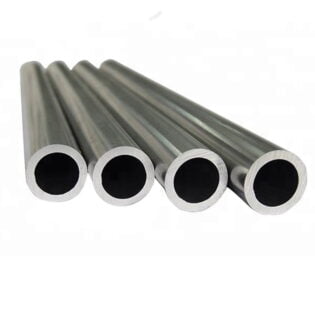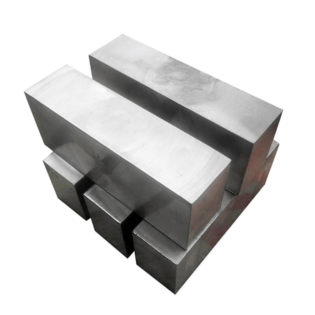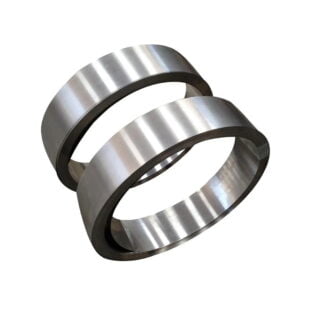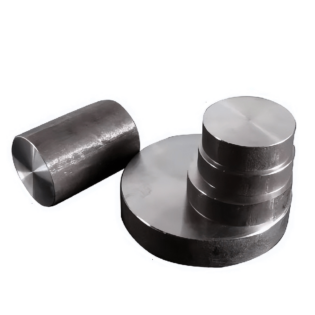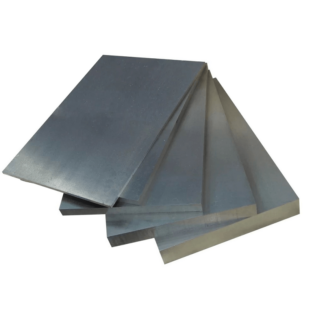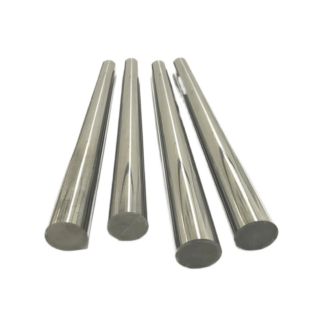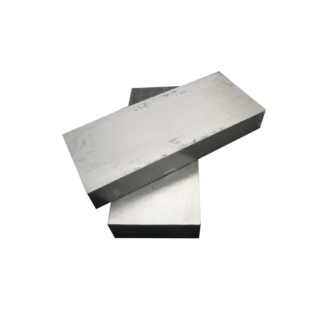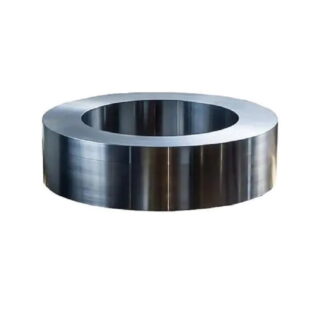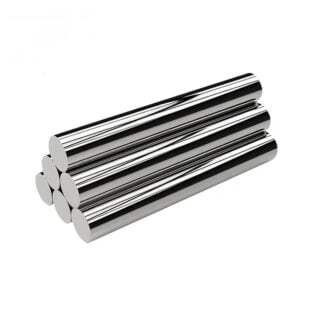하스텔로이 B-3(니켈 B-3) 스트립, 호일, 와이어, ASTM B333
애플리케이션
항공기, 용광로 및 화학 공정 부품, 벌집 및 가스 터빈 연소 섹션 부품
설명
Hastelloy® B-3은 공식, 부식 및 응력 부식 균열에 대한 저항성이 뛰어나고 합금 B-2보다 우수한 열 안정성을 지닌 니켈-몰리브덴 합금입니다. 이 합금은 또한 나이프 라인 및 열영향부 공격에 대한 저항력이 뛰어납니다. B-3 합금의 개선된 열 안정성은 B-2 합금 부품 제조와 관련된 문제를 최소화합니다. 이는 B-3 합금에서 유해한 금속 간 상을 침전시키는 경향이 감소하여 다양한 열 순환 조건 동안 및 이후에 B-2 합금보다 더 큰 연성을 제공하기 때문입니다.
Hastelloy B-3 니켈 기반 초합금
Hastelloy B-3은 구덩이, 부식 및 응력-성분 크래킹 플러스, 합금 B-2의 열 안정성에 대한 우수한 저항성을 갖는 니켈-몰리브덴 합금입니다. Hastelloy B-3 합금은 니켈-무 용합 합금 패밀리의 새로운 구성원입니다. 모든 온도 및 농도에서 염산에 대한 부식성이 우수합니다. 동시에, 그것은 또한 황산, 아세트산, 포름산, 인산 및 기타 비 산화 배지에 대한 부식성이 우수하다. 또한, 화학적 조성의 조정으로 인해, 원래 Hastelloy B-2 합금에 비해 열 안정성이 크게 개선되었다. B-3 합금은 열에 영향을받는 용접 영역에서 부식, 응력 부식 균열, 나이프 부식 및 부식에 대한 저항성이 높습니다.
Hastelloy B-2 합금과 비교하여, B-3 합금의 가장 큰 장점은 순간 중간 온도에 노출 될 때 여전히 우수한 인성을 유지할 수 있다는 것입니다. 이 노출은 일반적으로 가공의 열처리 중에 정기적으로 발생합니다. 짧은 시간 동안 700 ° C의 온도에 노출되면 B-2 합금은 취소하기가 매우 쉽고 B-3 합금은 손상에 대한 상당한 저항성을 나타내며이 노출을 몇 시간으로 만들 수 있습니다. 이것은 합금을 형성 장치와 같은 복잡한 부분으로 만들기 위해 큰 편의를 제공합니다. Hastelloy B-3 합금은 이전 B-2 합금의 모든 목적으로 사용될 수 있습니다. B-2 합금과 마찬가지로, Hastelloy B-3은 개 3 개 철 및 경구 구리 염이 존재하는 환경에서 사용하는 것이 권장되지 않습니다. 이러한 염은 신속하게 부식 손상을 유발하기 때문입니다. 염산이 철분과 접촉 할 때 구리, 그것은 철 및 구리 염과 화학적으로 반응합니다.
Hastelloy B-3 화학 조성 :
| Ni | 모 | 철 | 씨 | 구상화 소둔 및 연화 처리 | 크롬 | 미네소타 | 그리고 | 너 | 여 | 알 | 와 함께 |
|---|---|---|---|---|---|---|---|---|---|---|---|
| 65.0 분 | 28.5 | 1.5 | 0최대 0.01 | 최대 3.0 | 1.5 | 최대 3.0 | 0.10 최대 | 0.2 최대 | 최대 3.0 | 0.50 최대 | 0.20 최대 |
Hastelloy B-3 기계적 특성 :
- 인장 강도 (RM N/MM2) : ≥ 760
- 항복 강도 (RP0.2N/MM2) : ≥ 350
- 신장 (A5%) : 40
이점:
- β- 상 Ni4MO의 형성을 방지하기 위해 철 및 크롬의 최소 함량을 제어합니다.
- 환경 감소에 대한 탁월한 부식 저항
- 중간 농심 황산 및 많은 비 산화 산에 대한 우수한 저항
- 클로라이드 이온 감소 응력 부식 균열에 대한 매우 우수한 저항 (SCC)
Hastelloy B-3 (N10675) 용접 및 가공 :
1. 재료 분석 :
기계적 성질 Hastelloy B3 (N10675) 고체 용액 상태의 Hastelloy 시트 : 가열 온도가 상승함에 따라 인장 강도, 항복 강도 및 탄성 계수가 감소하는 반면, 신장, 열 팽창 계수, 열전도율 및 비열은 약간 증가합니다. 냉간 변형 속도가 증가함에 따라 경도, 인장 강도 및 항복 강도가 증가하고 신장이 감소합니다.
2. 특성 형성 : 분석 후 Hastelloy B3의 형성 특성은 주로 다음을 포함합니다.
- Hastelloy B3 재료는 높은 신장률을 가지며, 이는 콜드 형성에 유리한 조건을 만듭니다.
- Hastelloy B3 재료는 오스테 나이트 스테인레스 스틸보다 단단하며 경화를하는 경향이 더 명백하므로 냉간 형성 또는 단계별 형성 중에 더 많은 압력이 필요합니다.
- Hastelloy B3 물질의 냉간 형성 변형 속도가 10%미만인 경우, 처리 된 부품의 부식 저항에 영향을 미치지 않지만 용접 공정에서 잔류 응력의 존재는 용접에 뜨거운 균열을 일으킬 수 있습니다. 따라서, 후기 단계에서 용접 해야하는 워크 피스의 경우, 잔류 응력의 효과는 가능한 한 많이 제거되어야합니다.
- 심하게 변형 된 콜드 형성은 Hastelloy B3 물질의 수율 비율을 증가시키고 응력 부식 및 균열의 민감도를 증가시킵니다. 중간 및 최종 열 처리 공정이 종종 사용됩니다.
- Hastelloy B3 물질은 고온에서 황, 인, 납 및 기타 저 융점 금속을 산화시키는 데 매우 민감합니다.

